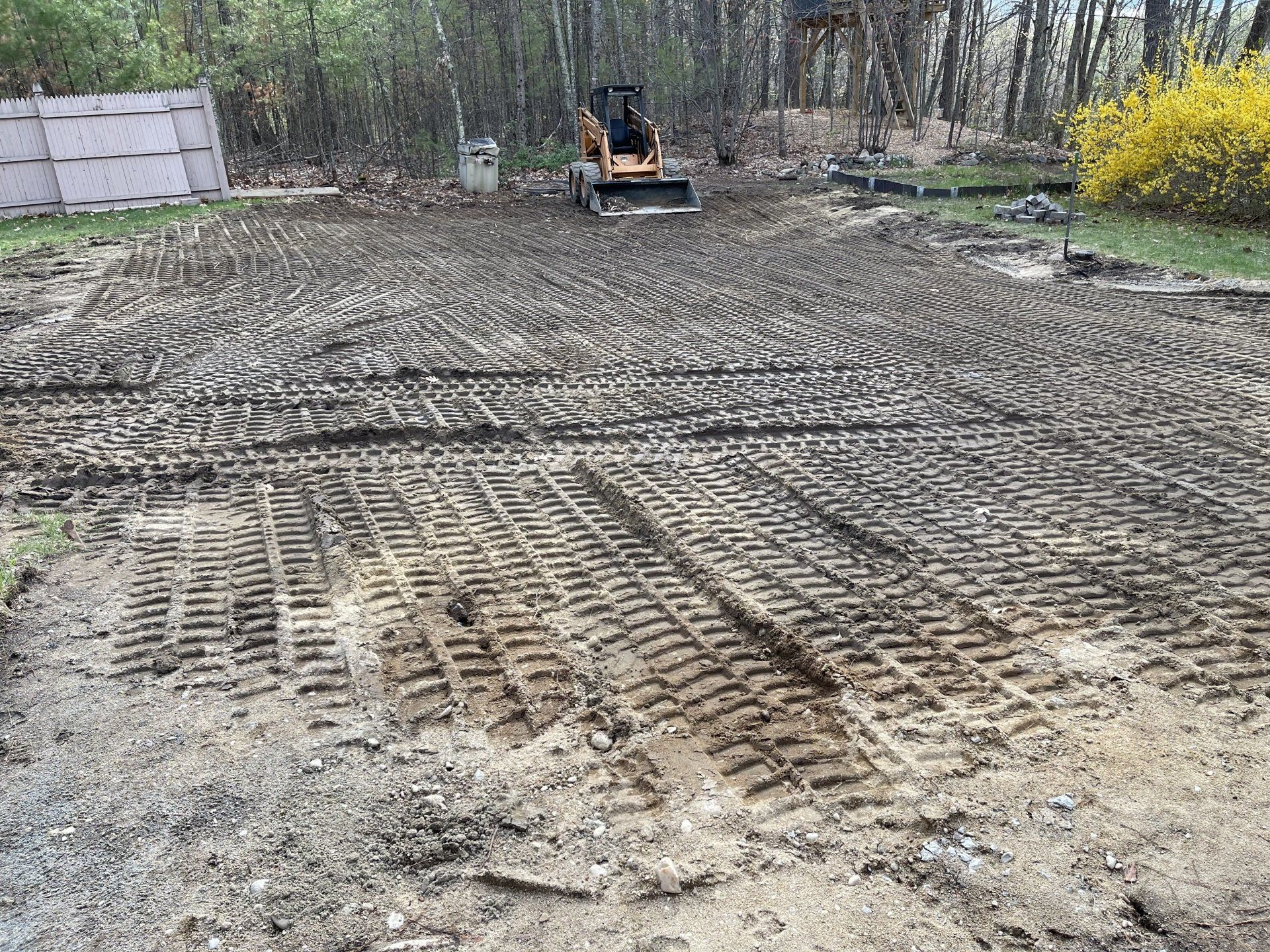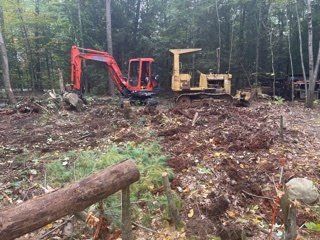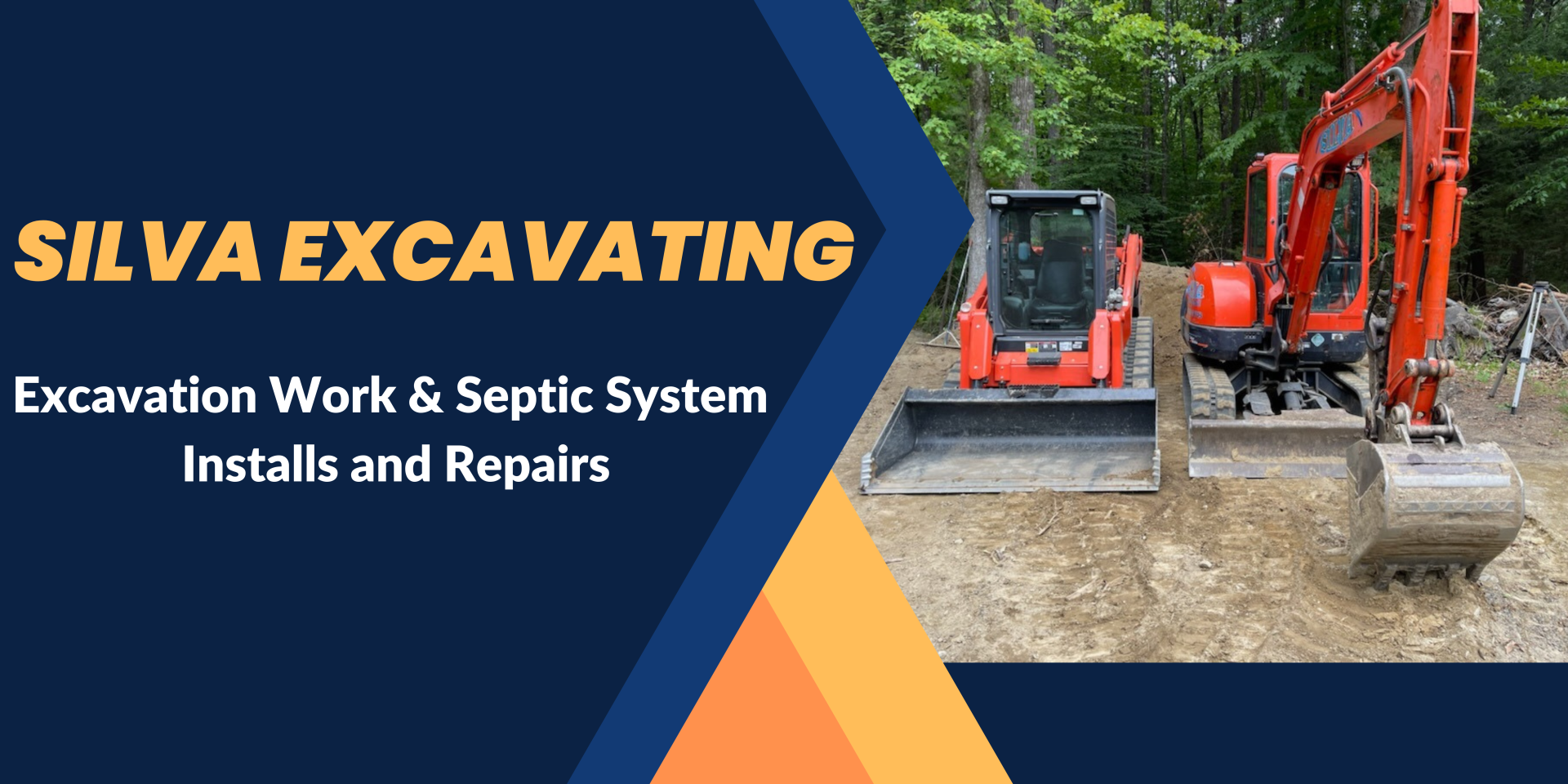Site Work Pepperell MA
Problems with Poor Site Preparation Lead to Costly Delays
Before any construction starts, your project depends on proper site work. Without it, you risk delays, structural problems, and costly repairs. Many homeowners and developers skip essential steps, resulting in foundation shifting, poor drainage, and unstable structures.
Don’t Let Bad Groundwork Ruin Your Project
If your property isn’t cleared, leveled, and tested properly, your building’s lifespan is at risk. Improper site work causes drainage problems, soil erosion, flooding, and uneven foundations. Worse, you may violate local building codes, leading to expensive fines or having to tear down newly built structures.
Silva Excavating eliminates those risks by offering professional, dependable site work in Pepperell MA, ensuring your project is safe, compliant, and built on solid ground.
Start Right With Silva Excavating’s Site Work in Pepperell MA
At Silva Excavating, we offer complete site preparation services, from clearing and grading to excavation and soil testing. Our experienced team ensures your construction site is stable, safe, and ready to build.
What Does Site Work Include?
Our site work services in Pepperell MA include every step needed to turn raw land into a construction-ready area:
- Land Clearing: We remove trees, stumps, rocks, and old structures, creating a blank canvas for your project.
- Excavation: We dig, move, and shape the earth to create a stable base for foundations, driveways, and utilities.
- Grading and Leveling: We adjust slopes to ensure proper drainage, preventing future water damage and erosion.
- Soil Testing: We assess soil strength and stability to ensure it can safely support your planned structures.
- Drainage Systems: We install necessary trenches, culverts, and piping to prevent water pooling and foundation flooding.
- Septic and Utility Prep: We excavate and prepare for septic tanks, water lines, and electrical service routes.
- Foundation Excavation: We dig to precise depths for concrete footings, basements, or slab foundations.
Every project is customized to meet the needs of your home, building, or commercial development.
Why Is Site Work Important?
Site work is the most important first step of any construction project. Without it:
❌Foundations settle unevenly, causing cracks.
❌ Poor drainage leads to water damage.
❌ Erosion washes away topsoil and landscaping.
❌ Utilities like septic systems fail early.
Proper site preparation
saves you thousands in long-term maintenance and protects your home or building investment.
Our Site Work Process in Pepperell MA
We use a step-by-step approach to ensure your site is properly prepared:
1. Site Survey & Marking
We mark out property lines and project boundaries, making sure construction stays within legal and zoning requirements.
2. Site Clearing
Trees, roots, boulders, and debris are fully cleared to allow safe, clean construction.
3. Grading & Drainage Planning
Our team grades the land to ensure rainwater flows away from your foundation, protecting your home from flooding.
4. Excavation & Digging
We excavate for basements, crawlspaces, footings, septic tanks, and drainage trenches with precision.
5. Soil Testing & Stability Checks
We test and compact soil to ensure long-term stability before any foundation is poured.
6. Utility Preparation
We dig trenches and prep for underground utilities like water, sewer, and electrical services.
7. Final Prep & Cleanup
Before your builders arrive, we smooth, level, and clean the site for hassle-free construction.
Why Choose Silva Excavating for Site Work Pepperell MA?
✔️
Local Expertise: Serving Pepperell MA and surrounding towns, we understand local regulations and soil types.
✔️
Experienced Crew: Decades of excavation and grading experience, ensuring your site is prepared right the first time.
✔️
Full-Service Equipment: We own our equipment—excavators, bulldozers, compactors—so you avoid rental delays and extra fees.
✔️
Turnkey Solutions: From permits to final grading, we handle every detail so you can start construction stress-free.
✔️
On-Time & On-Budget: We deliver your site on schedule, ready for your builder to step in.
Our Site Work Services Cover All Project Types
✅
Residential Home Builds
✅
Driveways, Garages, & Additions
✅
Commercial Buildings & Parking Lots
✅
Agricultural Land Prep
✅
Septic System Installations
✅
Land Clearing & Lot Development
Common Site Problems We Fix
If your land suffers from:
- Poor drainage or standing water
- Tree roots damaging structures
- Uneven ground causing unstable foundations
- Flood-prone low spots
- Soft, unsuitable soil for building
Silva Excavating has the experience and equipment to fix it quickly and efficiently.
Safety is Our Top Priority
Site work comes with risks like cave-ins, utility strikes, and soil collapse. Our team follows OSHA safety standards, uses utility mark-outs, and performs daily site inspections. You can rest easy knowing your site is in safe hands.
Ready to Build? Start With the Right Groundwork
Your home or commercial building is only as strong as the ground it’s built on. Protect your investment by starting with professional site work in Pepperell MA.
Excavation collapses are extremely hazardous because they may happen suddenly, reducing the amount of time that employees (and in some situations, other people in the area) have to evacuate the area, particularly if the collapse is substantial. The rate at which an excavation collapses raises the level of danger that is inherent in this kind of operation. The falling dirt may bury or crush any person that happens to be in the way, causing death by suffocation or internal crush injuries. The ramifications are substantial because of this potential outcome.
Steps for Excavation Site Preparation
One of our surveyors will go out to the site to make certain that it is in the appropriate place and that it falls within the restrictions and boundaries that the site is meant to be inside. They will set up markings all around the property to make sure the developers are aware of its boundaries.
The land at a site must first be properly cleansed of all debris and then leveled before it can be used for any kind of development. The first step in this first phase is removing any trees and their roots that might potentially be in the way. The employees at the excavation site will also remove any items or structures that are buried under the earth, in addition to any buildings or other impediments that may be sitting on the excavation site. The soil is going to be tested in order to assess its prospective structural integrity. This is being done to make sure that it will be able to sustain a normal force that is sufficient to support the structures that are going to be constructed on it in the future. In order to determine the likelihood of flooding in the region, they will also examine how effectively the earth absorbs water. Investigation of the Geotechnical Site, just like the procedure of testing the soil, our investigators will come out to the excavation site in order to investigate the groundwater conditions as well as the rock composition that is present in the region. This is extremely crucial in order to comprehend how to construct a base for the buildings that will sit on the surface. In the pre-construction phase of constructing a site, one of the most important steps is designing the site plan. The site plan includes all of the information about the site, such as where the buildings will be located, where the access roads will be built for construction vehicles, where the supplies will be stored so that they are easily accessible, and where the drainage and septic systems will be built on the site.
How Long does it take to Excavate a Construction site?
Before you can even begin putting up walls, there is a significant amount of preparation and planning that must take place in the construction industry. The building process begins with excavation, which is one of the most important phases and also the very first step. Excavation is not usually a simple or affordable stage in the process, but it is one that should not be skipped because of its critical significance. The laying of the foundation for the building, which will be erected on top of it, requires excavation, which is an essential step. Because of this, site work is a vital element in the building process, and it can even be the most important one.
Excavation Safety
When planning a visit to an excavation site, please keep the following safety considerations in mind:
Avoid destroying subsurface utilities and take care not to damage surrounding buildings by using safe digging practices and moving away from these features as you dig. Check the excavation every day before beginning work, as well as after any occurrence that could have an effect on its steadiness.
Make sure that people may enter and exit in a secure manner. Stop the wall from caving in by building a shore, a bench, or a batter back. Do not make the assumption that the ground will hold without support. To stop people and things from falling in, construct barriers that are sturdy enough to remain standing even if they are struck by a falling body.
Managing Risks on an Excavation Site
The identification of potential dangers on the job is just one component of effective risk management; rather, it requires a much broader perspective. Consider the reasons behind every negative occurrence, the chances that it will take place, the results that will follow if it does, and the measures that may be taken to prevent it entirely or reduce its severity.
To manage risks:
Find all of the potential dangers that may fairly be expected to endanger people's health and safety. Remove the danger to the greatest extent that is possible under the circumstances. If it is not possible to completely remove the danger, then the risk should be reduced to the greatest extent that is feasible given the circumstances. Ensure that the controls that have been introduced continue to work effectively. Controls should be reviewed, and if required, revised, in order to maintain a working environment that is risk-free to employees' health and safety to the greatest extent that is practically possible.
🔗Explore More Excavating Services
●🛠️Excavation Pepperell MA
●🛠️Retaining Wall Pepperell MA
●🛠️Septic Install Pepperell MA
●🛠️Drainage Pepperell MA
●🛠️Site Work Pepperell MA
●🛠️Land Clearing Pepperell MA
FAQ – Site Work Pepperell MA
What does site work involve?
Site work includes land clearing, grading, excavation, soil testing, drainage planning, and preparing utilities before construction begins.
How long does site work take in Pepperell MA?
Most residential site work projects take 2-5 days, while larger commercial projects may take 1-3 weeks depending on land size and scope.
How much does site work cost in Pepperell MA?
Costs depend on land size, complexity, and services needed. Typical residential site work ranges from $5,000 to $20,000. We offer detailed free estimates.
Is site work necessary for every project?
Yes, proper site preparation prevents structural issues, drainage problems, and project delays, ensuring long-term property stability.
Do you handle drainage and septic preparation?
Absolutely. We specialize in full-site prep including drainage installations, septic excavation, and sewer trenching.
Silva Excavating – Your Trusted Site Work Contractor in
Pepperell MA
📍 Serving homes and businesses within a 20-mile radius
📞
Call Now 🌐
www.silvaexcavating.com



